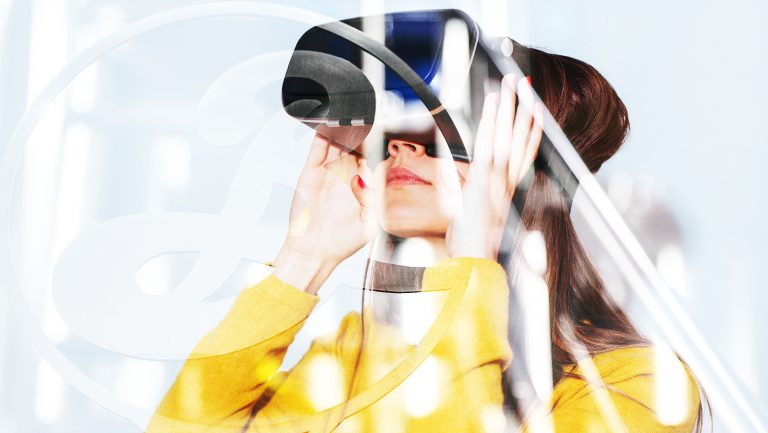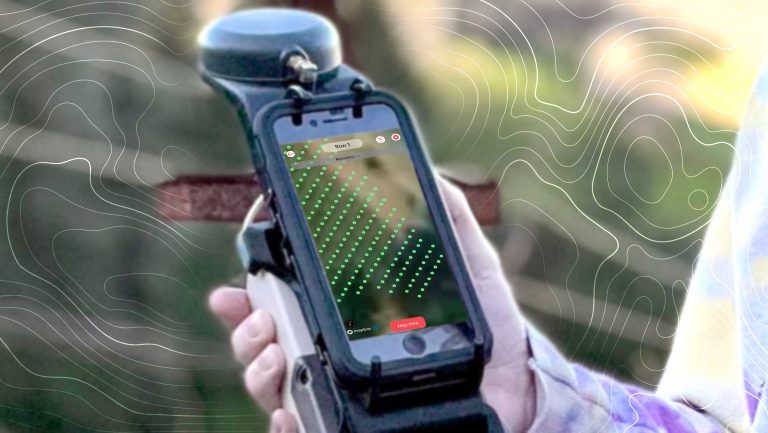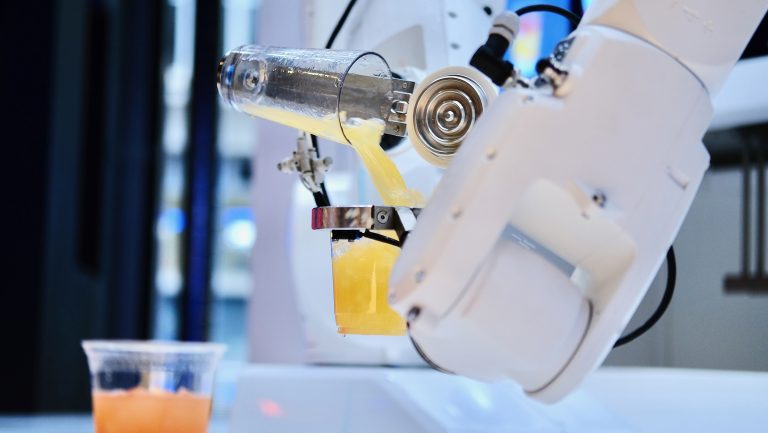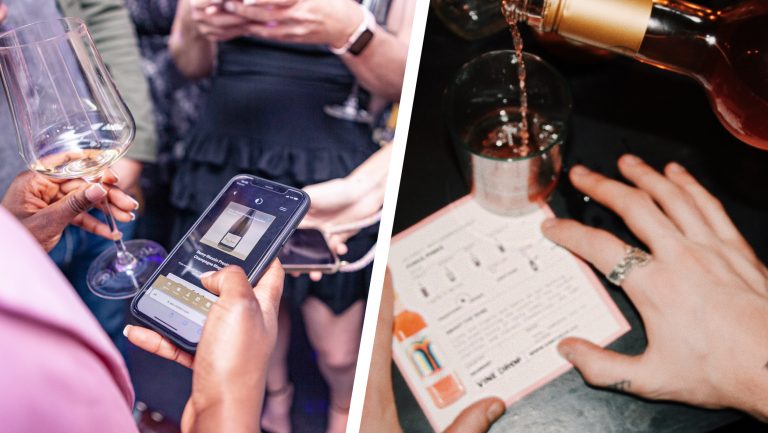One of the oldest Champagne houses in the world, Ruinart was first established in 1729, but that hasn’t stopped it from embracing one of the most cutting-edge technologies—augmented reality, or AR—to stay young at heart.
“We believe that our DNA is linked with innovation,” says Fabien Vallérian, the international communications director of the company, which is based in Reims, France. “We were the first to open a Champagne house, we were the first to create wooden boxes to carry the bottles, we were the first to do rosé Champagne, and we were the first to collaborate with an artist, in the 19th century [Czech art nouveau artist Alphonse Mucha]. So we think that we have to keep up with our time and new technology. [Ruinart’s culture is] a mix of modernity and tradition.”
For its foray into AR, Ruinart worked for a year with the Japanese artist Kanako Kuno to create an animated character called Petit R, a modern-day representation of founder Nicholas Ruinart. The tiny character appears around the Ruinart bottle when users activate the Ruinart smartphone app and focus their phone’s camera on the bottle; Petit R then guides viewers through the Champagne house’s rich history, expertise, and values.

Don’t miss the latest drinks industry news and insights. Sign up for our award-winning newsletters and get insider intel, resources, and trends delivered to your inbox every week.
Beverage brands like Ruinart, and also bars and restaurants, are using AR to get on the radar—as well as Instagram feeds—of today’s experience-obsessed consumers. Passive consumption has become almost old-fashioned as consumers seek novel, shareable ways to enjoy a drink or venue, particularly on social media. AR, which overlays 3D animation onto what users view through their cell phones, is ready made for such an era.
The technology also pairs well with the ethos of the craft beverage scene, whereby transparency and authenticity are valued by consumers, so that the backstory, history, or heritage of a brand is especially appealing. AR enables brands to tell their story like never before, allowing their customers to have a personal, intimate experience with the brand through their cell phone screens.
Beverage Applications and Challenges
In Melbourne, Australia, Treasury Wine Estates (TWE) discovered the power of AR firsthand in 2017 when it became the first company to introduce its use on a wine label, with its 19 Crimes brand. The British rogue characters featured on the labels of 19 Crimes are intriguing enough. But the characters spring to life when a cell phone loaded with the brand’s AR app hovers over them.
The company says this use of AR became one of its most successful marketing activations ever, helping to drive double-digit growth for the brand in the U.S., growing it to a 1.5 million-case brand. TWE has since expanded the use of AR across its portfolio, including with Lindeman’s Gentleman’s Collection, Beringer Brothers, The Walking Dead, and Chateau St. Jean.
“We know that it’s often difficult for consumers to select wine from a crowded shelf,” says Michelle Terry, TWE’s chief marketing officer. “We wanted to find a way to add an experiential element to selecting and purchasing wine—and make our brands stand out beyond the traditional neck tags and shelf wobblers. This technology has been even more successful than we anticipated, bringing new consumers into the category as well as appealing to tech enthusiasts and wine lovers. It’s a great example of how we’re thinking differently about marketing wine.”
But AR is not just being used on labels. It’s also being used on-premise, in restaurants and bars. One of the more clever applications was introduced at London’s City Social, a restaurant owned by the Michelin star chef Jason Atherton. The establishment employs Mirage, an AR-enabled app that allows customers to scan the coasters of their cocktails and watch a beautiful animated presentation about the drink come to life.
“It was mainly about adding theater to the whole experience of having cocktails,” says Dan Betts, the head of strategy for Spark Emerging Technologies in Hampshire, England. His firm developed the AR technology for City Social, and he says the goal of the project was to entice more visitors to purchase one of the venue’s cocktails—and then to keep them coming back for new ones. Says Betts, “[Atherton was] trying to say, ‘Look, I’m adding some creativity to the whole mixology experience.’”
Some experts see AR cocktail menus in the future. Using an AR-enabled app and smartphone, a guest would see a cocktail materialize on the table or bar in 3D—guests would get a better feel for what they’re contemplating ordering. Seeing an image of a cocktail on the bar in front of them might also entice them to try something new.

“A lot of people contact us wanting their cocktail menus done in AR, and it makes a ton of sense,” says Mike Cadoux, the general manager of Kabaq 3D Food Technologies in New York City. “There’s just not the capability today.” For one thing, Cadoux explains, AR requires a certain amount of light, something that’s challenging in a dimly lit cocktail bar. Today’s technology also has difficulty re-creating glass virtually. “We want everything to look 99 percent real,” Cadoux says, “so that it will trick your brain into thinking it’s real and you’ll salivate over it.”
Until the technology can provide the level of realism Kabaq likes to deliver for its clients, Cadoux says the firm will stick mainly to food applications. But Kabaq is currently working to overcome AR’s limitations when it comes to beverages.
Another challenge may be sticker shock. Betts says it can cost between $25,000 and $30,000 in U.S. dollars for a basic-level AR project, which can take approximately four to six weeks to build.

Alcohol by Virtual Reality
The drinks industry is entering a new space, engaging consumers through immersive virtual-reality storytelling
AR Leaves the Screen Behind
As engaging as these examples may be, AR still requires users to view such experiences through their phone screens. But what if AR didn’t need smart devices any more?
Experiences like this can be found in several places around the globe today. They are built by means of a process called projection mapping, which produces the animation on the table or bar without the need for a smartphone. Sometimes the image is accompanied by a full multisensory experience similar to a 4DX movie, including sound, scent, airflow (or “wind”), and video. The goal of what some now call mixed reality is not only to entertain but, in some cases, to heighten the flavor of food or drink.
This is the case at Shanghai’s Ultraviolet, one of the world’s most expensive restaurants, where chef Paul Pairet treats his visitors to a 20-course multisensory meal. “[Chef Pairet] wants to perform at his best, serve a dish at its peak, in the most relevant ambience [and] atmosphere according to his idea of the dish,” says Monica Luo, Ultraviolet’s director of communications. “Ultraviolet synchronizes audiovisual projection, scent diffusion, and [perception] control to create one immersive ambience for supporting and enhancing what is most important—the taste of each dish.” A seafood course at Ultraviolet, for example, is accompanied by a 360-degree video of a harbor, along with scents and sounds of the sea.

Similar technology is also being tried out for bars. The artistic collective Skullmapping in Wilsele, Belgium, a designer of such projection-mapping experiences, created “Cocktailfactory,” a presentation that seemingly comes alive for guests, turning an ordinary bar into a memorable experience. In Cocktailfactory, animation is projected onto a specially designed resin bar-sculpture and features three miniature characters preparing a piña colada in a jungle landscape with an active volcano. Cocktailfactory was recently sent to the Meliá resort in Bali, Indonesia.
And The Blue Bar in London’s Berkeley Hotel recently collaborated with Bacardi for a limited run of a fully immersive drinks experience called Out of the Blue. Video, sounds, and scents enveloped guests and enhanced their perception of various cocktails, which were served in ceramic black cups so that colors and garnishes wouldn’t influence the sensory experience created by the environment. “It was quite popular in the first months—it really stimulated [guests’] taste buds,” says Raffaelle Di Monaco, Blue Bar’s manager, who added that the experience would have benefited from being updated every few months, something which would, however, have been prohibitively costly.

Such full multisensory experiences actually align with cutting-edge research being conducted by the Oxford University professor Charles Spence into the relationship among the senses. His research has shown that taste can be manipulated by sound, including different types of music.
“When people taste and drink beer, wine, and spirits with one piece of music,” Spence says, “they rate the drink as tasting different or smelling different than when [they taste] exactly the same drink with a different piece of music. A lot of the drink and food brands are now interested in developing apps that allow you to scan the label of your beer, wine, and Champagne and get access to soundscapes that have been chosen or designed to have these [sensory] effects.” Brands such as Stella Artois have done marketing of such “sonic seasoning” experiences, as Spence calls them.
As part of his research, Spence is working with the Japanese researcher Katsunori Okajima, who has developed a special AR system to test how the appearance of food or beverages affects taste. “By applying our technology,” Okajima says, “we can promote, for example, dieting and reduced salt because we showed that visual appearance can enhance [the perception of] oiliness and salty taste.” Okajima adds that his research may have applications for the drinks industry. “We are trying to modify the taste of beer by modifying the appearance,” he says. “Color appearance of beer is very critical for tasting it. For example, black-colored beer induces [a perception of] rich taste, whereas transparent beer, like water, [seems] flavorless. Our goal is that we can automatically modify the appearance of any foods and drinks in daily lives.”
In the meantime, AR’s capabilities are predicted to continue to evolve. Later this year, some Google search topics will be AR-enabled—for some smartphone users, searching “shark” with your cell phone will let you see one in your living room. If wearables like Google Glass continue to evolve, there is a good chance they will also incorporate AR, says Cadoux, freeing the technology from the smartphone screen even further. “In my mind,” he says, “it will go from the phone, to the glasses, to the contact lens, to an implant—and that’s how you’ll affect the world through all sorts of augmented realities.”
If such a vision of the future seems a bit too sci-fi, Cadoux says that what is undeniable here and now is the beverage industry’s interest in AR. “We see a big future especially in cocktails,” he says. “Cocktails and AR, I think, are going to be serious business. Beer and wine we can do also, but the visuals of that are not that much of a differentiator. But if I can show you what a Supreme Margarita looks like, that’s pretty valuable.”

Dispatch
Sign up for our award-winning newsletter
Don’t miss the latest drinks industry news and insights—delivered to your inbox every week.
Andrew Kaplan is a freelance writer based in New York City. He was managing editor of Beverage World magazine for 14 years and has worked for a variety of other food and beverage-related publications, and also newspapers. Follow him on Twitter at @andrewkap.







